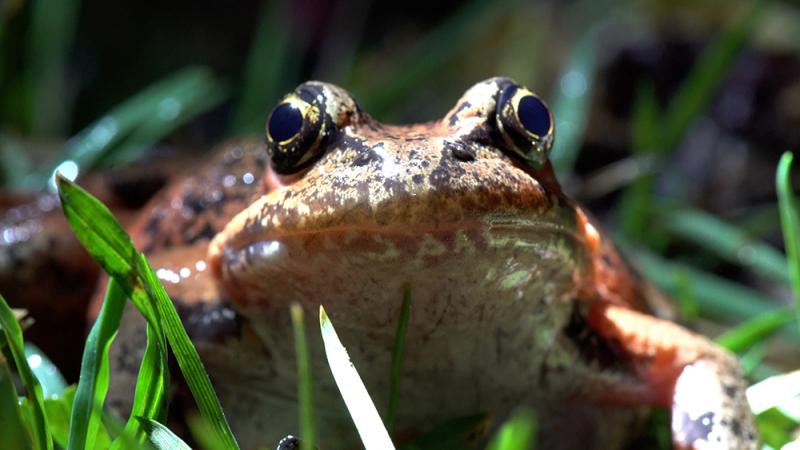On rainy winter evenings, Portland frogs hop a cab

Human-powered taxi safely delivers frogs to their destination
It’s a rainy winter evening in the City of Roses, and the area’s largest population of northern red-legged frogs is on the move.
They’re hopping down from Forest Park, where they live most of the time, to Harborton wetlands, their seasonal breeding grounds — crossing two roads, a four-lane highway and two sets of railroad tracks.
“It’s like that old video game Frogger,” said Philip Fensterer, a marine-life keeper at the Oregon Zoo by day and a volunteer “frog transportation specialist” by night. “In order to survive, these frogs need to make it across the road without getting hit by vehicles — and at rush hour, that’s no easy feat.”
The peak period for this perilous crossing is during rainy evenings in winter and spring when the temperature’s 45 degrees or higher. On these occasions, Fensterer — along with fellow Oregon Zoo keeper Amber Valdez and others — dons rain gear and heads out to join a crew assisting with the Harborton Frog Shuttle — aka the “Frog Taxi.”
Volunteers spread out, scanning the roadside and nabbing the amphibians as they approach. The frogs are then safely transported to their wetlands destination, where they’re counted and released. After mating and laying eggs, the frogs head back uphill and catch another cab home to Forest Park.
Northern red-legged frogs are considered a federal species of concern and are protected in Oregon. The Forest Park frogs are Portland’s last significant population, but hoppy-er times may be ahead. This year, the U. S. Fish and Wildlife Service, Oregon Department of Fish and Wildlife, the Oregon Wildlife Foundation and others are collaborating on a study to determine whether an underpass can be built below the highway for safe frog passage.
For now, a dedicated team of volunteers is keeping this population alive — one taxi at a time.
In addition to Oregon Wildlife Foundation, Harborton Frog Shuttle is made possible by the West Multnomah Soil and Water Conservation District.
Research on the Harborton frog crossing was one of several projects supported by donors to the Oregon Zoo Foundation through the Oregon Conservation and Recreation Fund, which finances efforts that help implement the Oregon Conservation Strategy, a blueprint for conserving the state’s wildlife and habitats. The OCRF also invests in outdoor recreation opportunities that connect Oregonians to the natural world and increase equity for underserved communities. Learn more at oregonisalive.org.
“Creating a brighter future for these frogs is a team effort, and this project is an inspiring example of what we can achieve when we work together,” said Julie Fitzgerald, executive director of the Oregon Zoo Foundation. “Our members and supporters are key to conservation efforts such as this, helping make our state a better place for wildlife, people and the habitats we all depend on.”
More News

Rescued cougar cubs are venturing out
A pair of orphaned cougar cubs, rescued and brought to the zoo by Washington Department of Fish and Wildlife staff in November, have begun exploring their outdoor habitat.April 17, 2025

Zoo seeks pika watchers for summer season
The Oregon Zoo is recruiting volunteers for Cascades Pika Watch.April 15, 2025

Zoo convenes action for imperiled elephants
Sabah government representatives joined conservation NGOs, local communities, palm oil producers, and tourism operators this week in the fight to save the world’s smallest elephants from extinction.April 11, 2025

